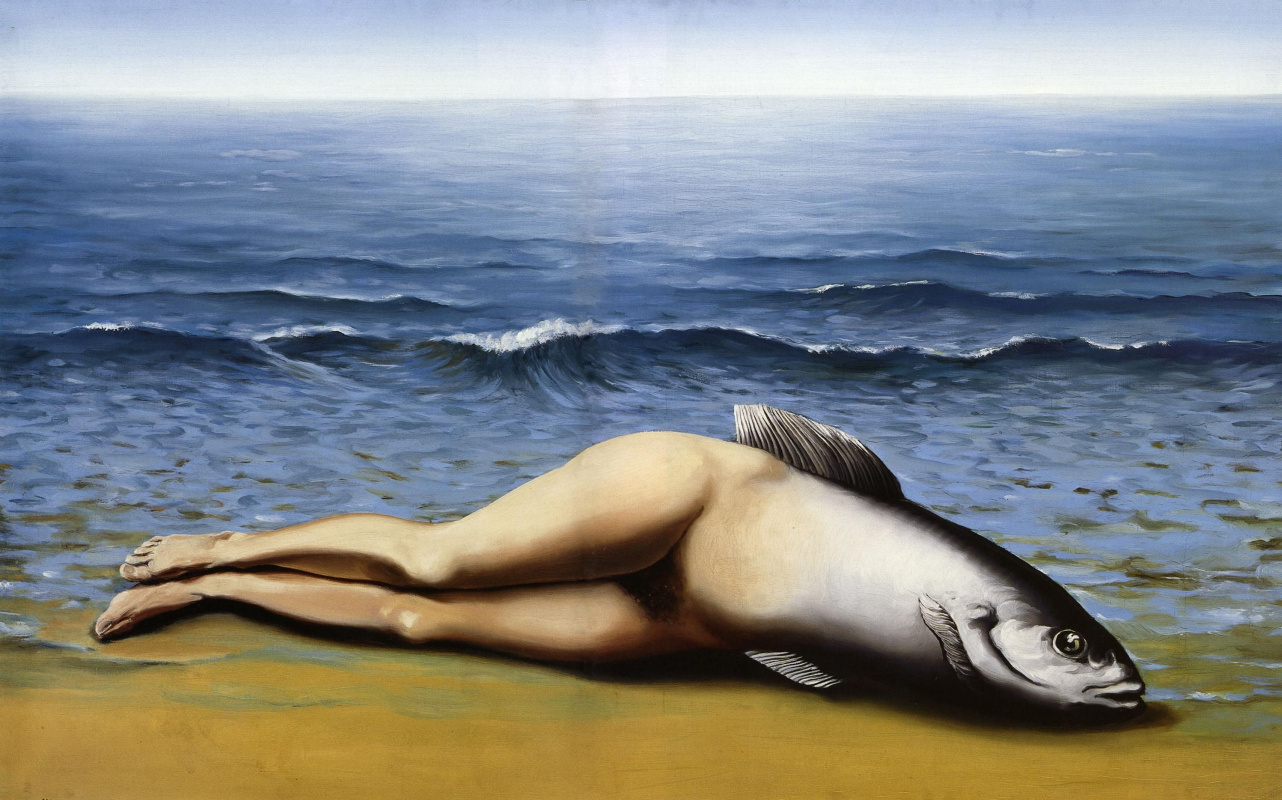log in
Enter site
Login to use Arthive functionality to the maximum
Collective invention
René Magritte • Painting, 1934, 73×116 cm
Description of the artwork «Collective invention»
René Magritte called the direction in which he worked "magical realism," even though he was a member of the Surrealist group. And indeed - the artist's work is unique, it went beyond Surrealism and hardly reckoned with its philosophy. Instead of creating an irrational and bizarre world in his works, as his colleagues Salvador Dali, Joan Miró or Max Ernst did, Magritte preferred to explore existing visual images, exposing their flaws and showing how the figures of speech we use are related to our way of thinking. The objects in the painter's paintings appear to us with all their realism, but immediately Magritte undermines our faith in this reality with his favorite techniques - and it slips from under our feet.
One of the artist's works that makes us question the reality around us is Collective Invention. This canvas was painted in 1934, and it depicts a fantastic creature - a half-woman half-fish. We are all familiar with the legends that tell about mermaids, and each of us has about the same idea of what the mythical inhabitants of the ocean look like. Perhaps this image is the "collective invention" referred to in the title, but somehow Magritte reverses this idea and radically changes the picture we have in our minds. On the canvas we see a creature with the legs of a woman and the torso of a fish, lying on the shore, as if carried by the sea. "Collective Invention" beautifully demonstrates Magritte's ability to convey the transition from the warm tones of human skin to the cold, silvery scales, which gives rise to a sense of both reality and unreality of the image. In this work, the seductive allure of the familiar mermaids disappears, leaving a disturbing, cold and repulsive image that has sexual overtones at the same time.
There are many interpretations of the meaning behind Collective Invention. The painting is interpreted, among other things, in terms of:
1. feminist criticism - referring to the dehumanization and objectification of the female body by Surrealists, pointing to the only - sexual - function that the creature depicted on the canvas can be destined for;
2. christian symbolism--viewing the fish as the symbol of the first Christians and water as the embodiment of baptism and cleansing from sin. In this reading, the portrayal of the lifeless and sexual anti-Mermaid is in opposition to morality and is almost blasphemous;
3. psychoanalysis and Freudian concepts - considering Magritte's tendency to recreate characters with their faces covered from the viewer, as well as characters in close proximity to water, as a consequence of childhood trauma. The fact is that the artist's mother committed suicide, and, according to legends, when the dead woman was pulled out of the river, her face was wrapped in her nightgown.
However, when trying to reveal the idea behind the work, it is worth remembering that Magritte himself always emphasized the fact that his works do not carry any particular semantic meaning.
At the moment the painting "Collective Invention" is in a private collection.
Text prepared by Elina Bagmet
One of the artist's works that makes us question the reality around us is Collective Invention. This canvas was painted in 1934, and it depicts a fantastic creature - a half-woman half-fish. We are all familiar with the legends that tell about mermaids, and each of us has about the same idea of what the mythical inhabitants of the ocean look like. Perhaps this image is the "collective invention" referred to in the title, but somehow Magritte reverses this idea and radically changes the picture we have in our minds. On the canvas we see a creature with the legs of a woman and the torso of a fish, lying on the shore, as if carried by the sea. "Collective Invention" beautifully demonstrates Magritte's ability to convey the transition from the warm tones of human skin to the cold, silvery scales, which gives rise to a sense of both reality and unreality of the image. In this work, the seductive allure of the familiar mermaids disappears, leaving a disturbing, cold and repulsive image that has sexual overtones at the same time.
There are many interpretations of the meaning behind Collective Invention. The painting is interpreted, among other things, in terms of:
1. feminist criticism - referring to the dehumanization and objectification of the female body by Surrealists, pointing to the only - sexual - function that the creature depicted on the canvas can be destined for;
2. christian symbolism--viewing the fish as the symbol of the first Christians and water as the embodiment of baptism and cleansing from sin. In this reading, the portrayal of the lifeless and sexual anti-Mermaid is in opposition to morality and is almost blasphemous;
3. psychoanalysis and Freudian concepts - considering Magritte's tendency to recreate characters with their faces covered from the viewer, as well as characters in close proximity to water, as a consequence of childhood trauma. The fact is that the artist's mother committed suicide, and, according to legends, when the dead woman was pulled out of the river, her face was wrapped in her nightgown.
However, when trying to reveal the idea behind the work, it is worth remembering that Magritte himself always emphasized the fact that his works do not carry any particular semantic meaning.
At the moment the painting "Collective Invention" is in a private collection.
Text prepared by Elina Bagmet


